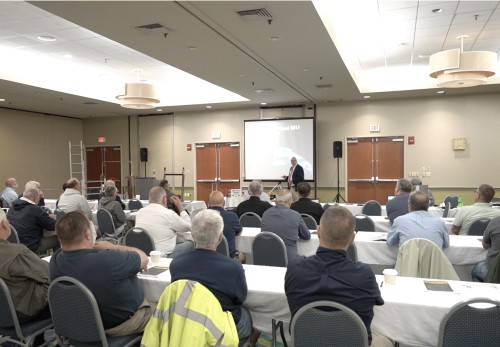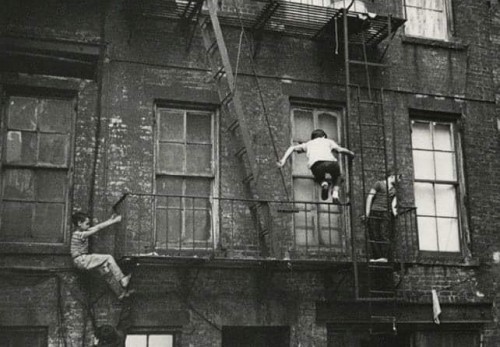



As the industry pioneers and the only nationwide fire escape company, we take pride in our full-service approach to your Fire Escape Inspection, Restoration, Replacement, Load Test, and Certification needs.
For over 50 years, we earned the trust of Property Owners, Managers, and Agents with the highest level of expertise and professionalism making us the go-to choice.
Don’t wait, contact us today to experience the confidence in knowing your fire escapes are certified and safe: to get out, get on, and get down to safety!

Our expert services are in demand by all building sectors including: Residential, Commercial, Institutional, and Industrial properties. We maintain egress systems made of Steel, Wood, or Cement to ensure compliance with Fire & Building safety standards and regulations."


As the industry pioneers and the only nationwide fire escape company, we take pride in our full-service approach to your Fire Escape Inspection, Restoration, Replacement, Load Test, and Certification needs.
For over 50 years, we earned the trust of Property Owners, Managers, and Agents with the highest level of expertise and professionalism making us the go-to choice.
Don’t wait, contact us today to experience the confidence in knowing your fire escapes are certified and safe: to get out, get on, and get down to safety!
Over 250 network partners. All 50 States.
Financing is available for Restoration, Re-painting, & Replacement.
As a Property Owner, Agent, or Manager it's important to understand the certification process for your exterior metal or wood staircase (second means of egress), commonly referred to as a "fire escape." It is required by State and Local Fire and/or Building Codes to certify the fire escape's strength through a Load Test or other evidence of strength every five years and submit the certification to the AHJ. Failing to maintain a structurally sound and properly painted fire escape could result in the loss of insurance coverage and/or liability issues for the Property Owner or Agent.
The importance of inspection, certification, and restoration services for their exterior egress systems must not be overlooked. By taking the necessary steps to maintain these features, stakeholders can ensure the safety and longevity of their property and avoid potential liability issues. This website offers a valuable resource for all property Owners/Agents to learn more about these services and make informed decisions about their property maintenance.


From a historic perspective, the Life Safety Code, also known as NFPA 101, has its origins in 1918. At that time, a committee dedicated its efforts to studying significant fires that resulted in loss of life and analyzing the causes behind such tragedies. Despite its name, the Life Safety Code is not a legal code itself, and it lacks statutory authority. Nevertheless, the language used in the code is deliberately designed to be suitable for mandatory application, making it easier for adoption into law by relevant authorities.
In 1927, the code introduced section 101 7.3.8.6.2, which granted the Authority Having Jurisdiction (AHJ) the power to accept certification of Emergency Egress Systems, specifically fire escapes, based on load tests or other evidence of strength. This provision transferred the responsibility of accepting certifications from a centralized body to the AHJ, which was typically represented by building departments. The International Building Code (IBC) later gave authority to the building departments, requiring building owners to maintain their systems and keep them free from obstructions primarily on their own leaving the fire escape as the Bastard Child of Egress. No one dared or cared to look and “If it Ain’t Broke, Don’t Fix It” attitude prevailed for close to a hundred years.
However, due to decades of poor maintenance and neglect, numerous accidents occurred, highlighting the dire need for repairs and restoration of fire escapes. As a response to this historical context, the IFC 1104 was finally introduced in 2012. This code mandated a certification by load test every five years, placing the responsibility in the hands of fire prevention officers. This regulation finally led to the much-needed attention and renovation of fire escapes, rectifying the neglect they had suffered for so long.
In addition to the Life Safety Code and its subsequent amendments, another code issued by the Occupational Safety and Health Administration (OSHA) played a crucial role in ensuring safety during building renovations. This code, 1910.37, stipulates that two certified means of egress must be in place on all floors before renovation work can commence. This requirement aimed to protect workers, firefighters, and first responders in the event of an emergency.
When viewed as a layered approach, these codes collectively treat fire escapes as essential fire safety equipment. They provide the AHJ with the necessary tools to effectively oversee the maintenance and certification process of various external structures, including stairs, balconies, fire escapes, and bridges every five years. Through historical developments and the implementation of these codes, the focus has shifted towards ensuring the safety and well-being of individuals within buildings, emphasizing the importance of fire prevention and emergency preparedness.